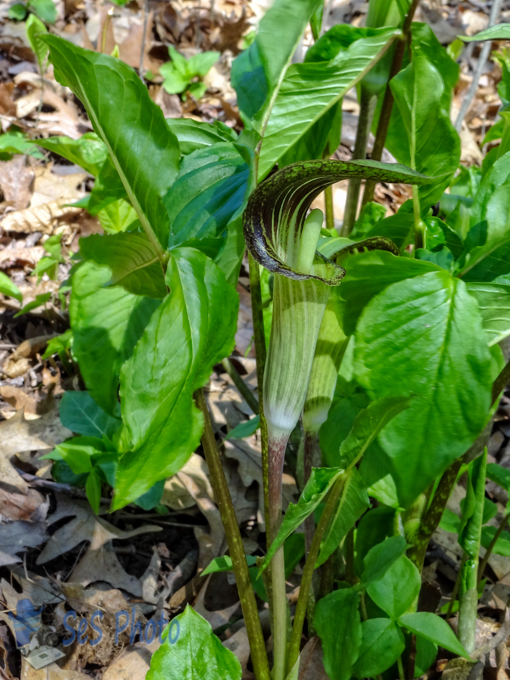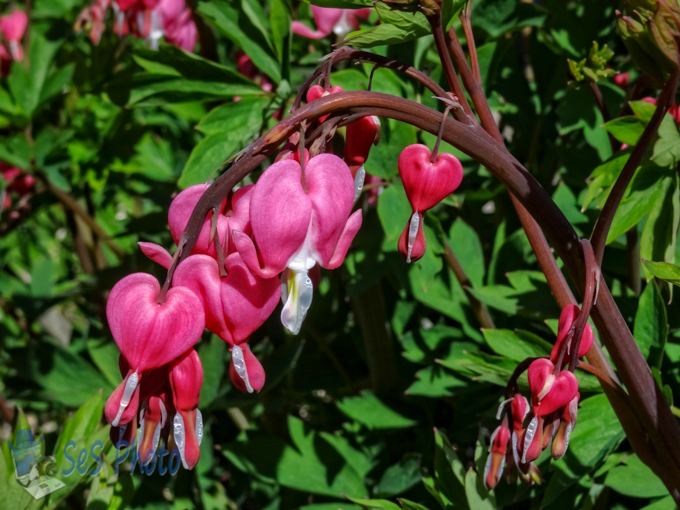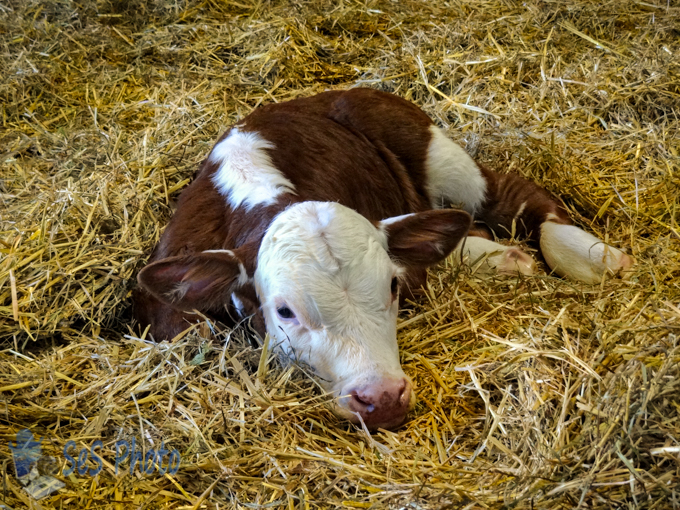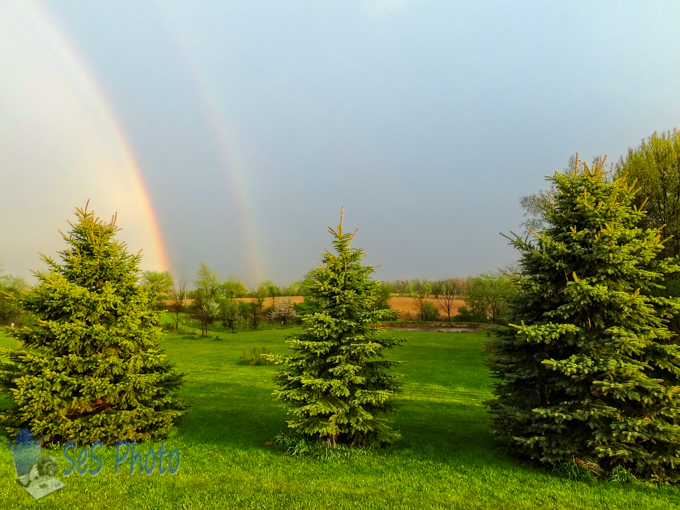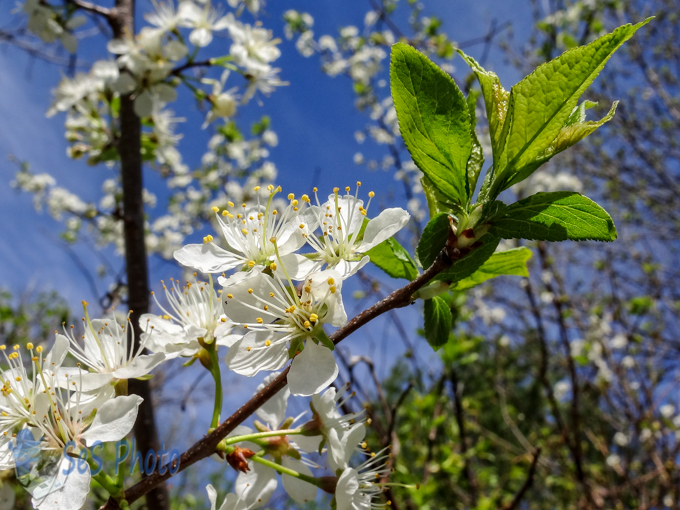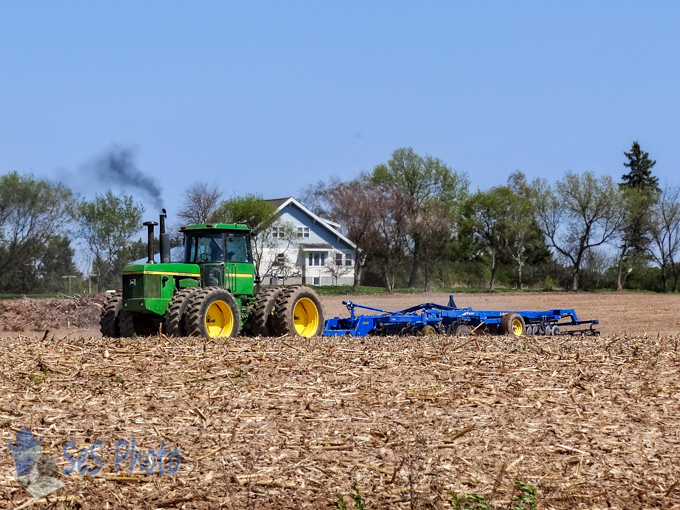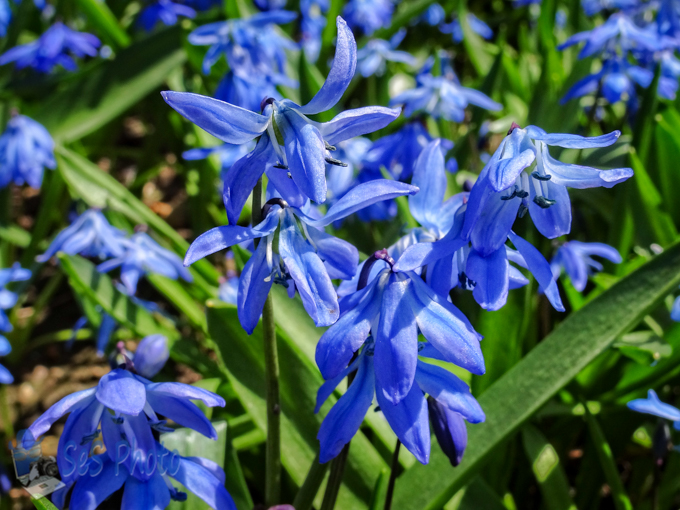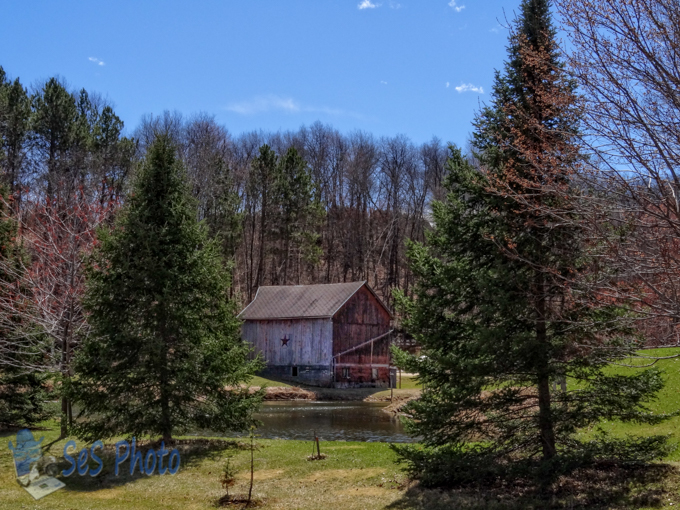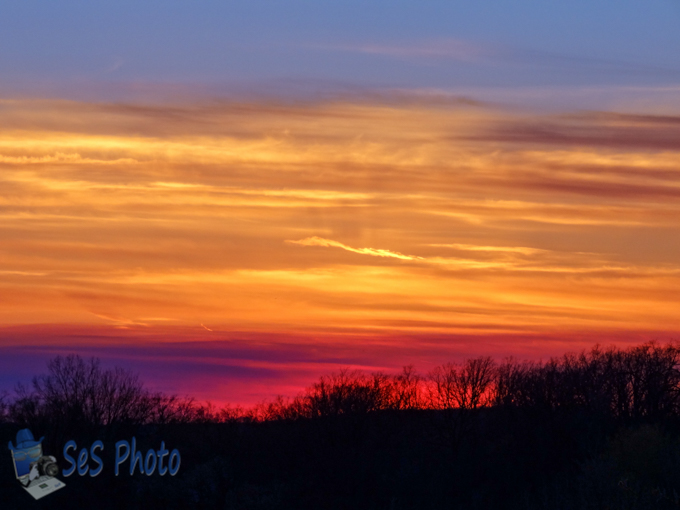With the mention of snowflakes in the air, other wildflowers besides the Jack-in-the-pulpit might want a hood to keep the snow off their heads. The name comes from the fascinating structure of its flower resembling a old-fashioned raised pulpit with a like a tiny man inside.
Jack Hiding Inside


